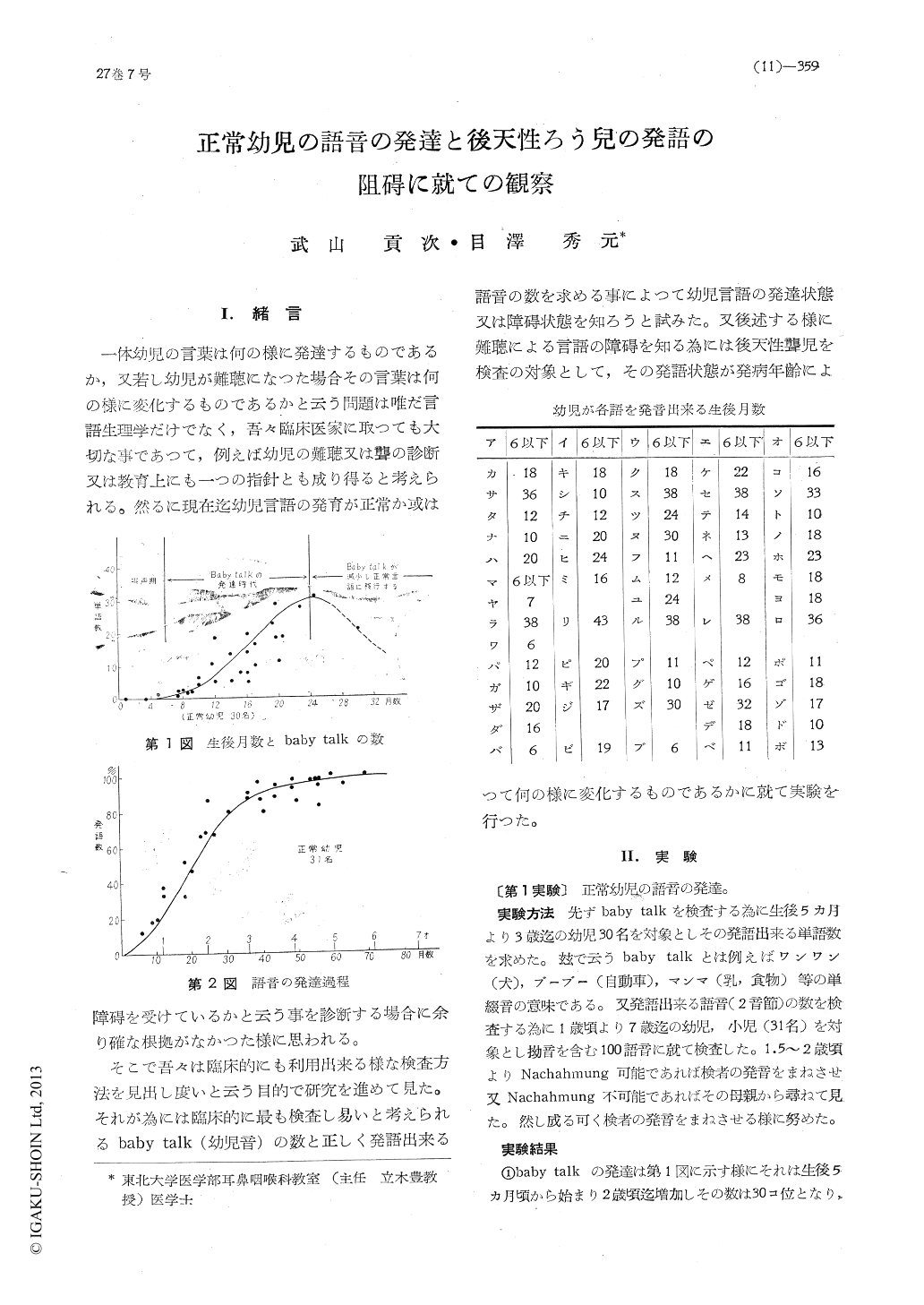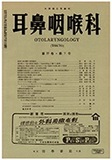- 有料閲覧
- 文献概要
- 1ページ目
Ⅰ.緒言
一体幼児の言葉は何の様に発達するものであるか,又若し幼児が難聴になつた場合その言葉は何の様に変化するものであるかと云う問題は唯だ言語生理学だけでなく,吾々臨床医家に取つても大切な事であって,例えば幼児の難聴又は聾の診断又は教育上にも一つの指針とも成り得ると考えられる。然るに現在迄幼児言語の発育が正常か或は障碍を受けているかと云う事を診断する場合に余り確な根拠がなかった様に思われる。
そこで吾々は臨床的にも利用出来る様な検査方法を見出し度いと云う目的で研究を進めて見た。それが為には臨床的に最も検査し易いと考えられるbaby talk(幼児音)の数と正しく発語出来る語音の数を求める事によつて幼児言語の発達状態又は障碍状態を知ろうと試みた。又後述する様に難聴による言語の障碍を知る為には後天性聾児を検査の対象として,その発語状態が発病年齢によつて何の様に変化するものであるかに就て実験を行つた。
TAKEYAMA AND MIZAW A observe with follow ups 31 infants for factors involving the development of speech. In another mixed group of 30 individuals consisting of infants and those who are slightly older the utterances and words dilivered by these individuals are recorded according to the words spoken and their respective ages. Basing upon the chart thus, constructed speech disturbances found among the deaf and hard of hearing child may be rated clinically according to the stage to which his speech development has attained. Notes are also made on speech development among the congenitally deaf with particular attention to the time when deafness in such a child had begun.

Copyright © 1955, Igaku-Shoin Ltd. All rights reserved.


